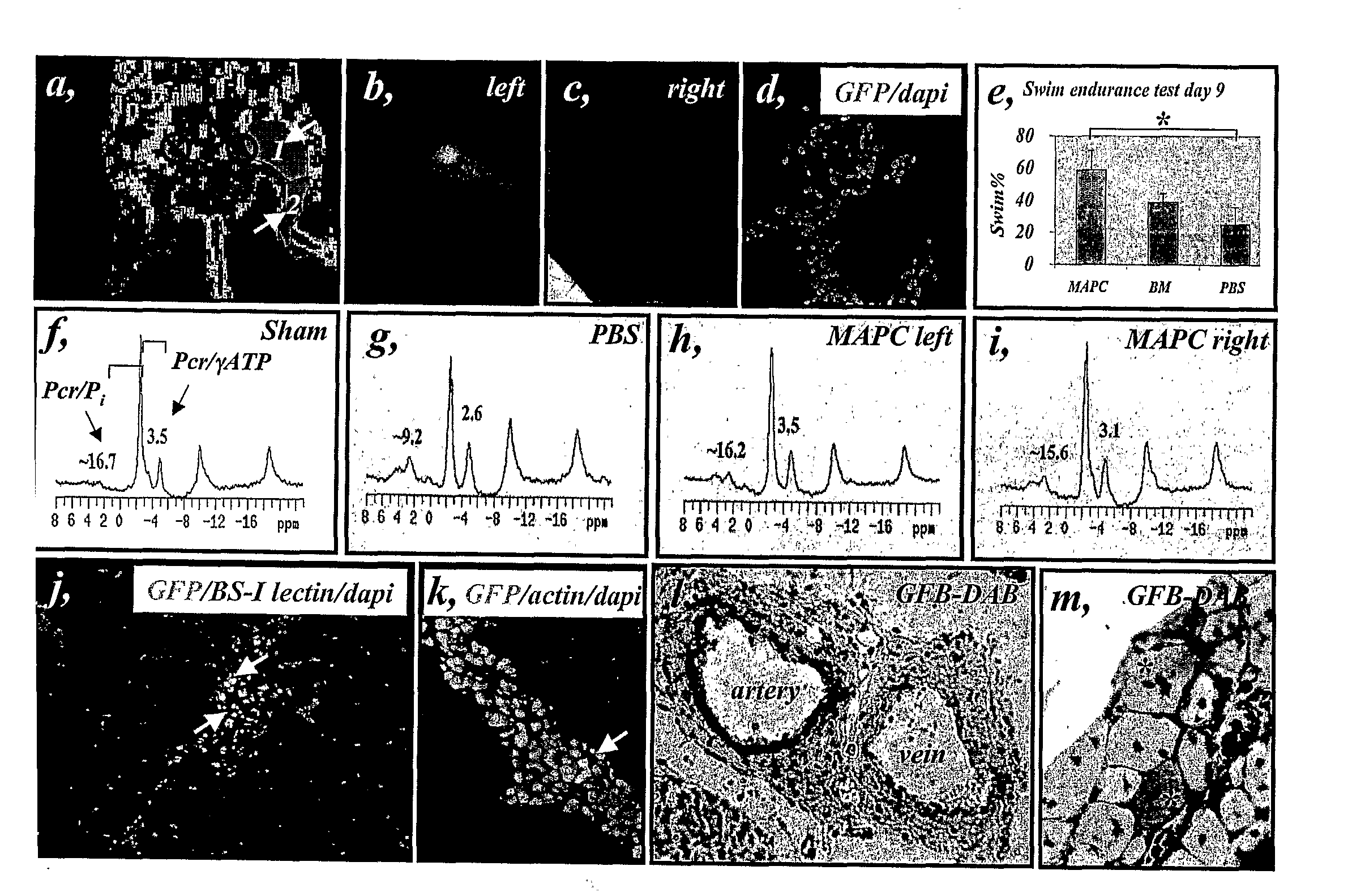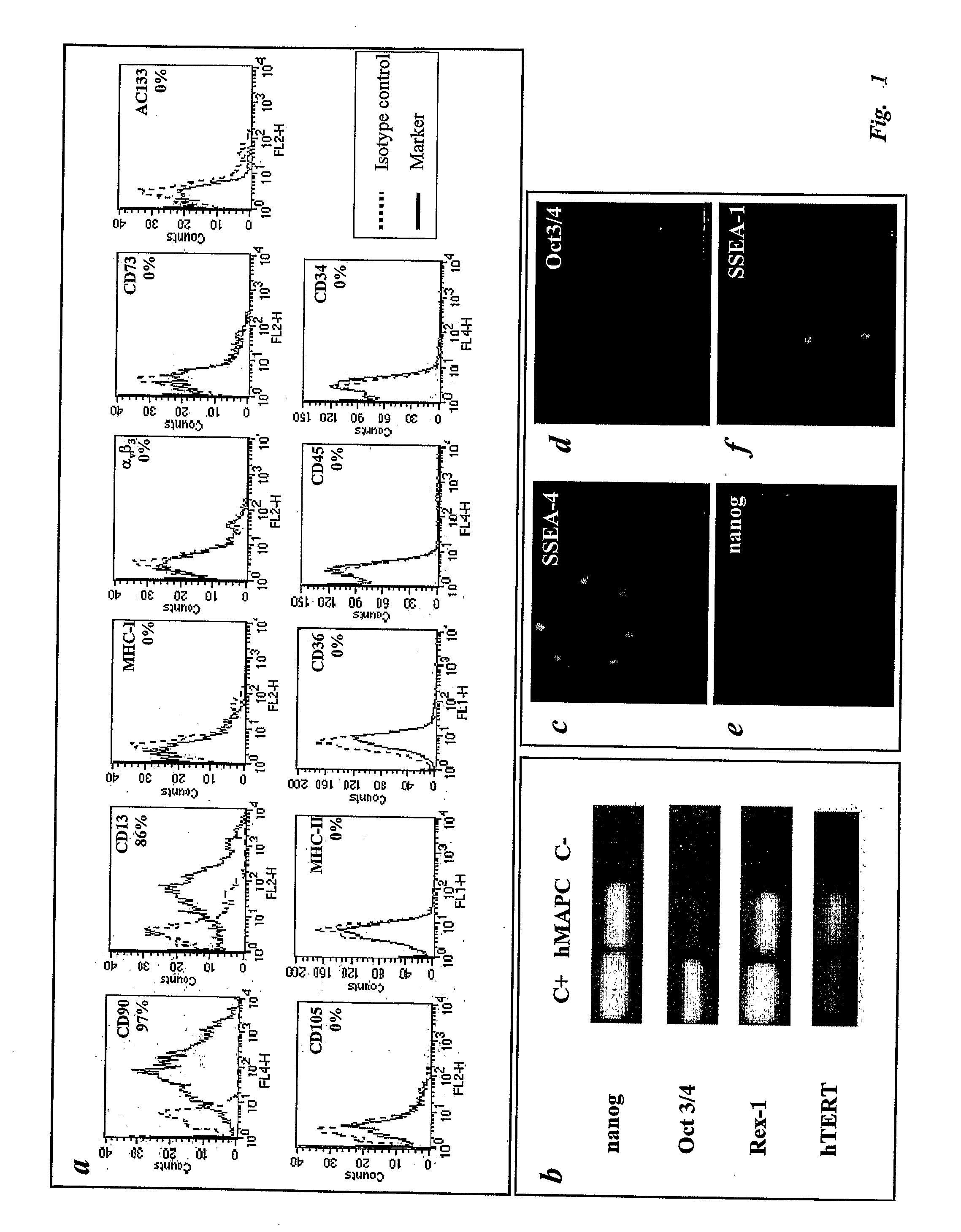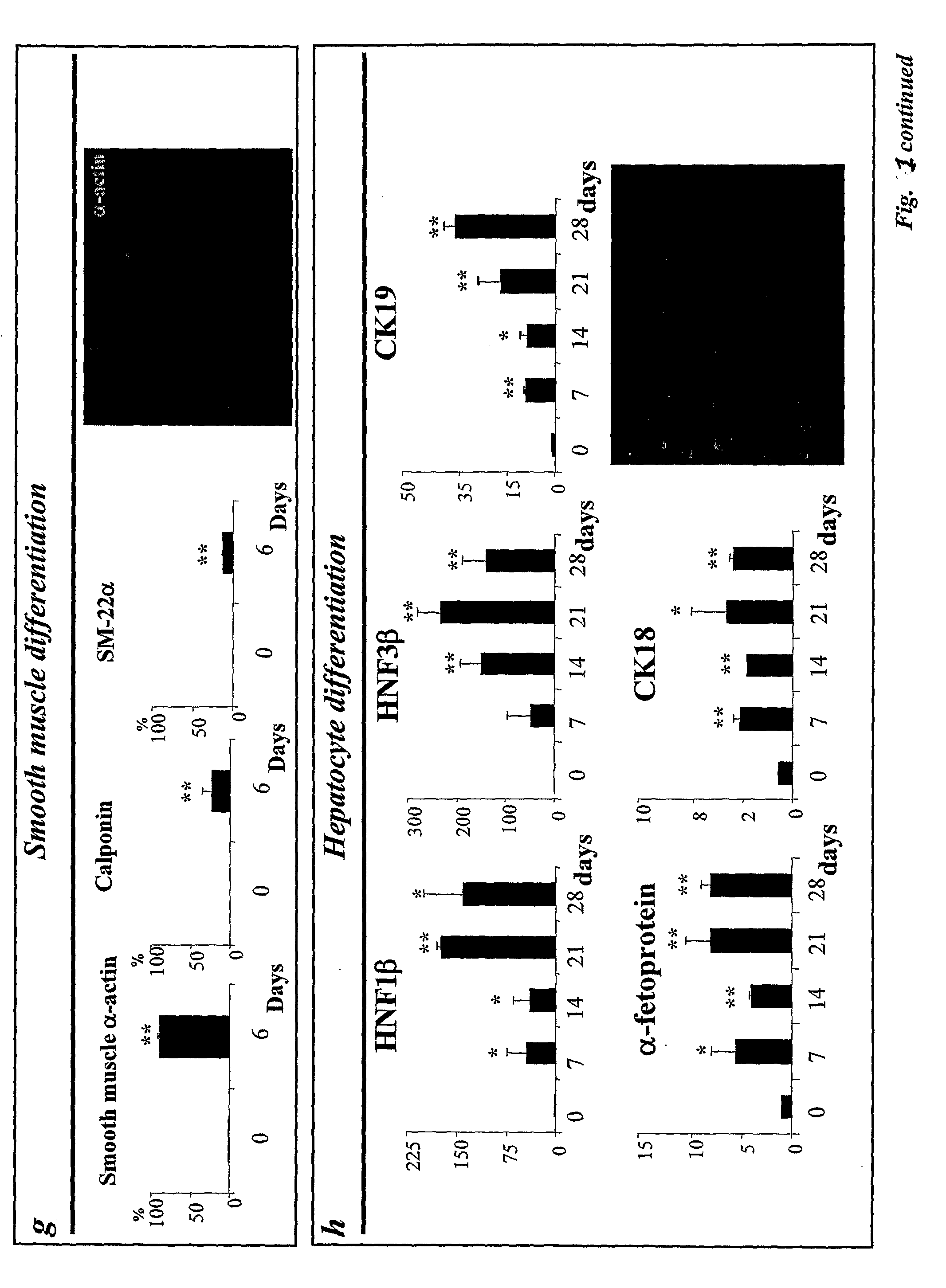Vascular/Lymphatic Endothelial Cells
a technology of lymphatic and vascular endothelial cells and stem cells, which is applied in the field of nonembryonic stem cells, can solve the problems of inability to analyze the specific venous or arterial potential of different types of stem cells, and the signal involved in the fate of arterial, venous or lymphatic endothelium only starting to be unraveled, and achieves the effect of increasing expression
- Summary
- Abstract
- Description
- Claims
- Application Information
AI Technical Summary
Benefits of technology
Problems solved by technology
Method used
Image
Examples
example 1
In vitro Analysis hMAPCs
[0266]Phenotypic and Functional Endothelial Potential of hAC133+ Cells and hMAPCs
[0267]Having established and characterized hMAPCs capable of differentiating into mesoderm, endoderm and ectoderm derived tissues, the endothelial potential of hMAPCs was compared with that of hAC133+, a cell population previously shown to be enriched for endothelial, neuronal and hematopoietic progenitors (Gehling, 2000; Asahara, 1997). Culture of hAC133+ cells in the presence of VEGF165 induced down-regulation of hematopoietic markers (CD34 and CD45) and up-regulation of mature endothelial markers (CD36, CD105 and αvβ3) (FIG. 2a-b), as has been described Gehling et al. (2000). The majority of the cells in 21-day cultures (which are further designated as “hAC133-ECs) expressed VEGF receptors 1 (Flt-1) and 2 (KDR), angiopoietin receptors (Tie-1 and Tie-2; FIG. 2c-g) and were functional as demonstrated by uptake of acetylated-LDL (AcLDL; FIG. 2h) and vascular tube formation on mat...
example 2
In vivo Analysis of hMAPCs
[0277]Shh and Dll-4 Induce Arterial hMAPC-EC Differentiation and Arterial-Like Vessel Growth in vivo
[0278]To determine whether the same factors could also induce hMAPC differentiation into arterial endothelium in vivo, 0.5×106 undifferentiated hMAPCs in growth factor reduced matrigel containing either VEGF165 (“standard media”), or VEGF165+Shh+Dll4 (“arterial media”) was injected under the skin of nude mice (N=6 per group). To account for the effects of the admixed cytokines on host cells, the corresponding “cytokine-alone” groups were also included. In order to track the cells following implantation, hMAPCs were labeled with CFSE or iron particles (Resovist™; Arbab et al., 2003) before injection. Irrespective of the cytokine cocktail used, localized areas of CFSE-labeled cells (FIG. 9a) and single Resovist-labeled (Arbab et al., 2003) hMAPC-derived cells (FIG. 9b) persisted for at least 10 days in the matrigel plug as determined by in vivo live imaging and...
PUM
 Login to View More
Login to View More Abstract
Description
Claims
Application Information
 Login to View More
Login to View More - R&D
- Intellectual Property
- Life Sciences
- Materials
- Tech Scout
- Unparalleled Data Quality
- Higher Quality Content
- 60% Fewer Hallucinations
Browse by: Latest US Patents, China's latest patents, Technical Efficacy Thesaurus, Application Domain, Technology Topic, Popular Technical Reports.
© 2025 PatSnap. All rights reserved.Legal|Privacy policy|Modern Slavery Act Transparency Statement|Sitemap|About US| Contact US: help@patsnap.com



